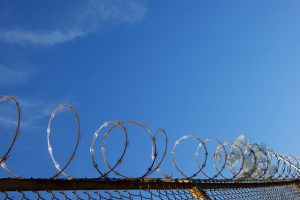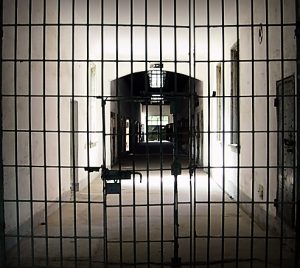 America has a significant prison population, which is common knowledge throughout the world, but the reasons behind mass incarceration here are something few understand. Most of us recognize that prisons in the United States are full of inmates, but the actual figures are quite astounding. You shouldn’t need to be a Criminologist to understand America’s incarceration issue. For those in the majority, here is some useful information. As of 2012, the U.S. made up approximately 4% of the world’s population, but 25% of the world’s total prison population. This is staggering. Moreover, statistics revealed by the International Centre for Prison Studies show that 707 of every 100,000 Americans live behind bars. Today, more than 2 million people are in prison in the United States–1 in 100 adults–and this figure is expected to increase over the next few years. So what’s the reason for this mass incarceration? Let’s take a look
America has a significant prison population, which is common knowledge throughout the world, but the reasons behind mass incarceration here are something few understand. Most of us recognize that prisons in the United States are full of inmates, but the actual figures are quite astounding. You shouldn’t need to be a Criminologist to understand America’s incarceration issue. For those in the majority, here is some useful information. As of 2012, the U.S. made up approximately 4% of the world’s population, but 25% of the world’s total prison population. This is staggering. Moreover, statistics revealed by the International Centre for Prison Studies show that 707 of every 100,000 Americans live behind bars. Today, more than 2 million people are in prison in the United States–1 in 100 adults–and this figure is expected to increase over the next few years. So what’s the reason for this mass incarceration? Let’s take a look
Imprisonment for Non-violent Crimes
In some countries, especially more developed ones like the U.S., people charged with non-violent crimes are typically cleared after they pay a fine or participate in community service. In the United States, things don’t work quite that way. Even misdemeanors, if they are repeated, can land people in the United States in prison. Three-strikes legislation, a controversial law passed in California in 1994, mandated 25 years-to-life prison sentences for people who committed non-violent crimes or non-serious felonies after their third conviction. After being passed, the law claimed many victims, the majority of them unjustly. After much criticism, the law underwent changes in 2012. The U.S. government also passed similar laws in the 1990’s to crack down on crime and to send a “zero tolerance” message to would-be criminals. As a result of controversial “three-strikes” and “truth-in-sentencing” laws, millions of people have been incarcerated not only for non-violent offenses but for extremely long prison sentences, including life-long terms.
The ‘War on Drugs’
In the 1980’s, the use of drugs in the United States became widespread with the use and abuse of cocaine and other illicit drugs. After acting with patience for several years, the U.S government declared a ‘War on Drugs’ and began cracking down on drug-related crimes by sentencing offenders to long prison terms. Before the crackdown, 150 of every 100,000 Americans were in Jail. After the crackdown on drugs, this number started to significantly rise. In the 1990’s alone, the American prison population increased by 22%. The majority of these new prisoners were people convicted of drug-related offenses. Today, approximately 50% of federal prisoners have drug-related (non-violent) convictions.
Longer Sentences
Another significant reason for America’s swelled prison population is longer terms of incarceration. As mentioned earlier, during the last two decades, individuals convicted of crimes in the United States have received long prison sentences even for minor felonies or non-violent crimes, like drug-related offenses. “Truth-in-sentencing” laws across the U.S. made it impossible for inmates to be released from prison early for “good beh avior” or other reasons. Other state laws required inmates to serve 95% of their sentences before becoming eligible for release. In the late 1990’s, the federal government terminated the use of parole, which meant that federal inmates had no chance of being released early from incarceration. According to statistics, about half of the people in the United States sent to prison spend a minimum of two to three years there. Approximately 10% get out of prison after seven or eight years behind bars, while nearly 5% die there.
avior” or other reasons. Other state laws required inmates to serve 95% of their sentences before becoming eligible for release. In the late 1990’s, the federal government terminated the use of parole, which meant that federal inmates had no chance of being released early from incarceration. According to statistics, about half of the people in the United States sent to prison spend a minimum of two to three years there. Approximately 10% get out of prison after seven or eight years behind bars, while nearly 5% die there.
Private Prisons
Yet another reason for mass incarceration in America that not many people realize is the use of private prisons. These for-profit facilities are run and managed by a third party that are contracted by a government agency. About 10% of America’s prison population is present in these for-profit private prisons. Many people have called for the closure of these prisons due to improper staffing, poor medical; treatments, and unsanitary conditions, but to date, those calls have been largely unsuccessful. In 2016, President Obama banned the use of private prisons for federal inmates, but inmates in-state private prisons are not impacted by Obama’s ban.
Changing Attitudes in America
Over the last sev eral years, especially during former President Obama’s term, there has been a shift in U.S. attitudes towards sending people to prison for non-violent offenses. With prison costs exceeding higher education expenditures, states are realizing that incarceration is not necessarily cost effective and that recidivism rates have actually increased with longer prison sentences. As a true testament to this shifting attitude towards incarceration, President Obama commuted the sentences of 1,715 inmates–more than any other president in U.S. history–before leaving office in January 2017. These commutations consisted mostly of inmates who had been previously convicted of non-violent drug offenses.
eral years, especially during former President Obama’s term, there has been a shift in U.S. attitudes towards sending people to prison for non-violent offenses. With prison costs exceeding higher education expenditures, states are realizing that incarceration is not necessarily cost effective and that recidivism rates have actually increased with longer prison sentences. As a true testament to this shifting attitude towards incarceration, President Obama commuted the sentences of 1,715 inmates–more than any other president in U.S. history–before leaving office in January 2017. These commutations consisted mostly of inmates who had been previously convicted of non-violent drug offenses.
The image of the United States is somewhat tarnished by the number of people it has in its prisons. For this reason, understanding the reasons behind America’s mass incarceration is important. The aforementioned things are just a few of the many reasons a good number of Americans lie in jail today.
